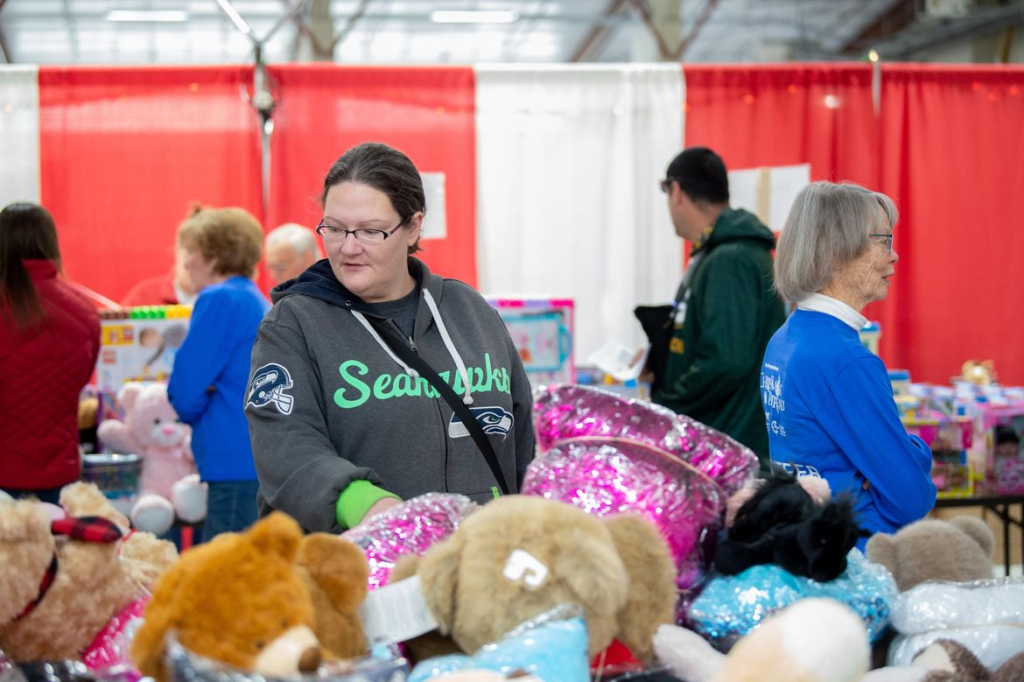As the holiday season approaches, the impact of tariffs on Christmas toys looms large, threatening to reshape the landscape of festive shopping. With a staggering 75% of toy products in the U.S. imported from China, the upcoming Christmas toy prices are likely to rise significantly due to the tariffs imposed by the Trump administration. Industry leaders have voiced concerns that these tariffs on imports will lead to both higher costs and fewer options for consumers searching for gifts this year. The toy industry faces unique challenges as it navigates these tariffs, with manufacturers struggling to adjust to the financial strain. This situation could leave families with limited choices when it comes to purchasing toys for their loved ones this Christmas.
As we dive into the holiday shopping season, the influence of trade tariffs on imported toys becomes increasingly apparent. These tariffs, primarily affecting products sourced from China, threaten to inflate Christmas toy prices and diminish the variety available to consumers. The toy industry is grappling with unprecedented challenges as it adjusts to the realities of rising costs and potential shortages. This predicament not only hampers manufacturers but also complicates the shopping experience for families eager to find the perfect gifts. The ongoing trade tensions cast a shadow on festivities, urging shoppers to be mindful of the economic factors at play this Christmas.
The Impact of Tariffs on Christmas Toy Prices
The ongoing trade tensions between the U.S. and China, particularly under the policies of President Trump, have wreaked havoc on Christmas toy prices. With tariffs significantly increasing the cost of imported goods, U.S. consumers can expect a sharp rise in overall holiday spending. Studies indicate that tariffs on imports can inflate prices up to 25% for popular toys, which means families will have to dig deeper into their pockets this festive season. As the holiday approaches, experts warn that the price surge could limit the diversity of available toys, leading families to settle for less than they might typically choose.
As such, with approximately 75% of toys sold in the U.S. being imported from China, the toy industry’s reliance on cheap overseas labor has never been more apparent. The tariff situation poses a double-edged sword; while the intention is to boost domestic production, the immediate effect is a steep decline in affordability and availability for consumers eager to purchase gifts for their children. News reports have already noted rising sticker prices on larger toys as suppliers seek to mitigate losses due to these unavoidable tariffs.
Toy Industry Challenges from Tariffs
The toy industry is feeling the repercussions of increasing tariffs, which have created numerous challenges for manufacturers and retailers alike. Industry leaders caution that the complications resulting from tariffs extend beyond just higher prices; they also encompass issues related to reduced supply chain efficiency. Following Trump’s tariffs, many manufacturers have found it difficult to predict production timelines, leading to potential shortages just when consumer demand peaks for Christmas shopping.
Furthermore, the impact of tariffs is sparking fears of widespread job losses within the toy sector. As companies reassess and adjust their supply chains in response to fluctuating import costs, the potential for layoffs looms large. Toy manufacturers, like WS Game Company, are already feeling the heat; with uncertainty surrounding future inventory and assembly lines, many are grappling with how to sustain their workforce amid rising operational costs.
The Effects of Import Dependency on the Toy Sector
The U.S. toy industry’s heavy reliance on imported products from China has highlighted vulnerabilities within the supply chain. The tariffs introduced by the Trump administration have exacerbated this dependency, revealing a crucial weakness as companies struggle to compensate for the added costs. The toy sector, renowned for its vast array of products, is now facing potential stagnation as businesses feel the economic pinch of increased tariffs and global supply chain disruptions.
Consequently, this dependency raises critical questions about the future structure of the American toy market. Industry representatives assert that while the move towards domestic production is laudable, the realities of manufacturing logistics make this transition complex and costly. With decades of expertise established in Chinese factories offering lower labor costs and efficient production capabilities, U.S. toy manufacturers may face insurmountable barriers in replicating these processes domestically.
Rising Costs Due to Tariffs on Imported Toys
With the introduction of tariffs on imported toys, consumers can expect significant price increases across the board this holiday season. Companies like Hasbro and Mattel have publicly indicated that they might need to raise prices to maintain profit margins under the new tariff regime. The direct correlation between tariffs and toy prices means that families preparing for Christmas must brace themselves for fewer options amidst rising costs. This will likely lead many consumers to re-evaluate their holiday spending habits.
Moreover, the challenges do not end at increased retail prices. As the cost of shipping and raw materials rises due to tariffs, the entire toy production landscape is at risk. Shipping container shortages further contribute to the mounting costs, resulting in inflated prices that consumers will inevitably notice during their Christmas shopping. Companies have warned that, combined with the tariffs, this will create a perfect storm of scarcity and expense, fundamentally altering shopping patterns this holiday season.
The Complexities of Manufacturing Toys in America
While the idea of shifting toy manufacturing back to the U.S. might seem appealing as a long-term strategy, the reality is fraught with complexity. The specialized labor that has been developed in Chinese factories has taken decades to cultivate, and replicating this skill set in the U.S. is a daunting task, especially considering the cost discrepancies in labor and materials. Industry leaders emphasize that specialized manufacturing techniques that ensure safety and quality in toy production are currently unmatched in the U.S.
Moreover, any immediate shift to domestic production would not only require investment in safety and quality assurance standards but would also demand a significant influx of skilled labor. This poses a substantial challenge in a market where competition for talent remains fierce. As such, the most viable solution appears to be fostering better trade relationships with nations that can provide similar manufacturing capabilities while exploring how to better localize production over time.
Future Prospects for the Toy Market Amidst Tariff Challenges
The future of the toy market under the shadow of U.S. tariffs remains uncertain. With rising prices and stagnant supply chains, stakeholders are left to navigate economic turmoil that directly impacts their businesses and consumer relationships. As manufacturers attempt to absorb increased costs, concerns mount regarding whether families will choose to spend as much on toys this holiday season, impacting overall sales significantly for companies already struggling.
As the industry battles these economic challenges, experts suggest that innovation and adaptation will be crucial. Emphasizing diversification in supply sources and possibly exploring new markets for toy production could be steps toward mitigating the adverse effects of tariffs. Stakeholders may also need to engage in strong lobby efforts to advocate for legislative changes that could ease tariffs and restore a level of stability to the market—ensuring that Christmas toys remain plentiful and affordable for all families.
Consumer Sentiment Towards Higher Toy Prices
As families gear up for the holiday season, consumer sentiment about the rising toy prices poses a significant concern. Many parents are already feeling the pinch from inflationary pressures across various household expenses, and higher toy prices may lead to budget cuts in holiday shopping. Studies show that when prices rise beyond a certain threshold, even loyal customers may reconsider their purchasing decisions, gravitating towards cheaper alternatives or reducing overall spending.
Furthermore, worries about limited toy options and affordability may lead to increased pressure on retailers to offer discounts and promotions. If consumers perceive that toy prices have become prohibitively expensive due to tariffs, they may turn to online marketplaces that offer used or discounted items, potentially hurting traditional retailers that rely on seasonal sales. The challenge will be how to strike a balance between maintaining brand value and competitive pricing during such a tumultuous shopping season.
Navigating the Toy Industry’s Supply Chain Issues
The cascading effects of tariffs extend beyond just price increases; they also highlight the fragility of the toy industry’s supply chain. Given the heavy reliance on imports, any disruptions—whether due to tariffs or external factors such as shipping delays—could result in severe shortages expected just ahead of the holiday rush. As the market adapts to these challenges, companies must find ways to innovate their supply chains to ensure that essential goods remain available to consumers.
Toy manufacturers must also consider how to build resilience against future tariff implementations or international tensions. Crafting strategies that include multiple sourcing options, robust inventory management, and diversifying production locations are all proactive steps the sector may need to take. Emphasizing agility in the supply chain can help mitigate the impact that tariffs have on future toy availability and affordability, ultimately safeguarding the profitability of companies within the industry and bolstering consumer trust.
The Role of Industry Advocacy Groups in Mitigating Tariff Effects
With ongoing tariff challenges affecting the toy industry, the role of advocacy groups has never been more critical. Organizations such as the Toy Association are rallying to represent the interests of manufacturers, retailers, and consumers alike, calling for policy changes that could alleviate the burdens imposed by these tariffs. Their efforts underscore the necessity for a unified voice to communicate the far-reaching effects of tariffs on the industry and to advocate for sustainable solutions moving forward.
Furthermore, these advocacy groups are working to raise public awareness regarding how tariffs impact not only prices but also the availability of beloved holiday toys. By collaborating with government agencies and business leaders, they aim to influence trade policy positively, emphasizing how essential it is to maintain a competitive toy market accessible to all. The advocacy efforts aim to protect consumers while also supporting the economic viability of U.S. toy manufacturers during these challenging times.
Frequently Asked Questions
What is the impact of tariffs on Christmas toy prices this year?
This year, tariffs on Chinese imports are expected to significantly increase Christmas toy prices. With around 75% of toy products sold in the U.S. being imported from China, the tariffs implemented by the Trump administration will raise costs for manufacturers, leading to higher retail prices for consumers during the holiday season.
How do Trump tariffs affect the toy industry challenges during Christmas?
Trump tariffs are creating substantial challenges for the toy industry as they result in higher production costs and fewer available products. With the majority of toys being imported from China, these tariffs threaten to limit selections and drive up prices, causing concern for both consumers and manufacturers ahead of Christmas.
Are imported toys for Christmas affected by tariffs on imports?
Yes, imported toys for Christmas are significantly affected by tariffs on imports. The steep tariffs imposed by the Trump administration on Chinese goods are raising the costs for these toys, which ultimately impacts consumers through increased prices and a reduced selection during the holiday shopping season.
Why are toy companies concerned about Trump tariffs impacting Christmas toy sales?
Toy companies are concerned that the Trump tariffs will drastically impact Christmas toy sales by inflating prices and limiting supply. With many manufacturers struggling to cope with the increased costs and potential disruptions in production, there is a fear of reduced availability for popular toys during the crucial holiday shopping period.
What is the relationship between tariffs on imports and Christmas toy demand?
The relationship between tariffs on imports and Christmas toy demand is complex. Higher tariffs increase the cost of toys made in China, which can decrease demand as consumers face higher prices. Consequently, this may lead to fewer purchases during the holiday season, further impacting the toy industry’s recovery.
How might tariffs on Chinese imports change the landscape of Christmas toy shopping?
Tariffs on Chinese imports are likely to change the landscape of Christmas toy shopping by increasing retail prices and limiting the variety of products available. With manufacturers facing higher production costs, consumers may find fewer toys on shelves and will need to adjust their holiday budgets.
Are there long-term implications of tariffs on the Christmas toy industry?
Yes, there are long-term implications of tariffs on the Christmas toy industry. Persistent high tariffs can lead to sustained increases in toy prices and might encourage manufacturers to shift production to other countries, which can disrupt established supply chains and affect the quality and variety of toys available in the U.S.
What can consumers expect regarding Christmas toy prices due to tariffs on imports?
Consumers can expect higher Christmas toy prices due to tariffs on imports. With many toys imported from China facing increased duty costs, retailers are likely to pass these costs on to consumers, leading to a more expensive holiday shopping experience this year.
How do tariffs impact the overall supply chain for Christmas toys?
Tariffs impact the overall supply chain for Christmas toys by slowing production in China, raising costs, and causing delays in shipping. As a result of these challenges, U.S. manufacturers may struggle to keep up with demand, leading to fewer options for consumers during the holiday season.
What efforts are being made to address the impact of tariffs on Christmas toys?
Efforts to address the impact of tariffs on Christmas toys include pushing for exemptions for toys from tariff lists and exploring domestic manufacturing options. Industry groups like the Toy Association are advocating for policies that protect toy imports and help mitigate the costs that consumers face during the holiday season.
| Key Point | Details |
|---|---|
| Tariffs on Chinese Imports | Toys represent one of the largest categories affected, with 75% of toys sold in the U.S. imported from China. |
| Impact on Prices and Selection | Higher prices and fewer options for Christmas toys are expected due to increased tariffs. |
| Industry Warnings | Industry leaders caution consumers to prepare for changes; Greg Ahearn warns that Christmas is ‘in danger’. |
| Manufacturing Challenges | U.S. manufacturers lack the efficiencies and expertise present in Chinese production, making it hard to shift production domestically. |
| Market Response | Toy manufacturers like Hasbro and Mattel face stock price declines as tariffs escalate. |
| Global Supply Chain Issues | Tariffs are exacerbating existing supply chain issues, leading to increased costs for all toy manufacturers. |
Summary
The tariffs impact on Christmas toys is significant, as they threaten to increase the prices consumers pay while limiting the variety available this holiday season. With the majority of toys sourced from China, the imposition of tariffs has created a perfect storm of rising costs and reduced production capabilities. As the holiday season approaches, consumers may find they have to adapt to fewer choices and higher prices in the toy aisle, underscoring the profound effects of trade policy on seasonal shopping.



